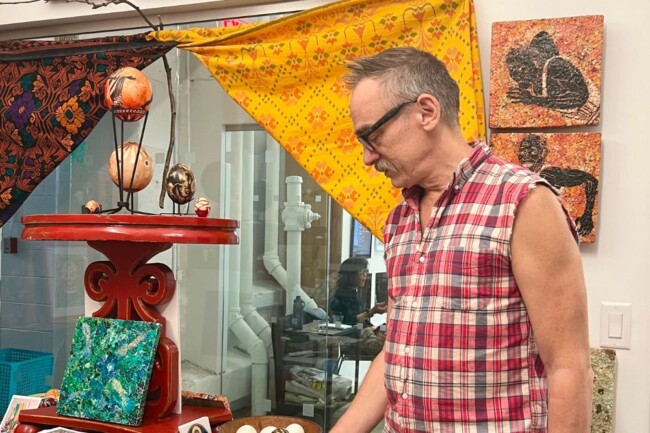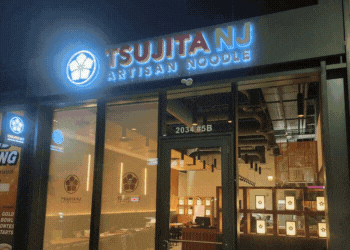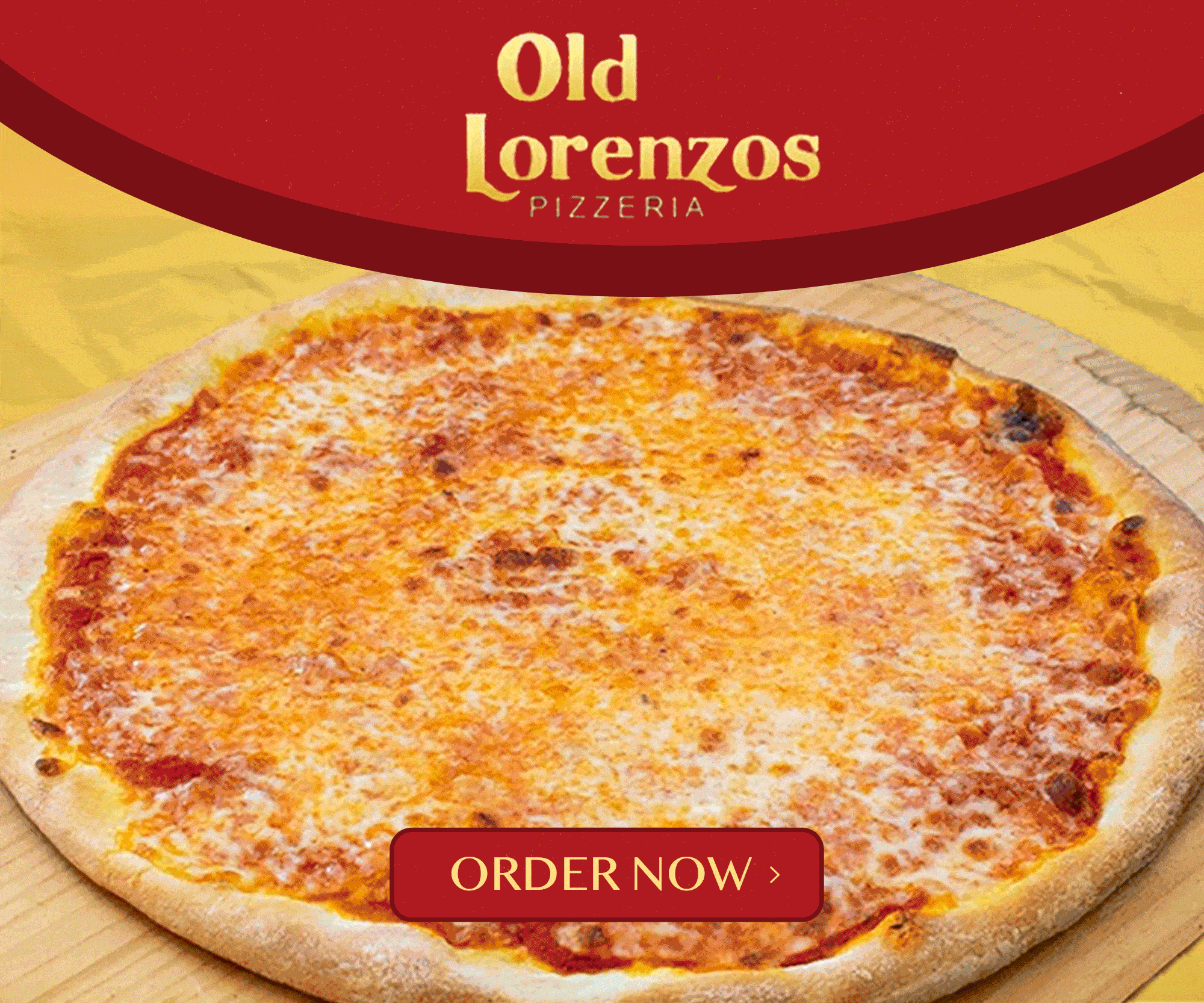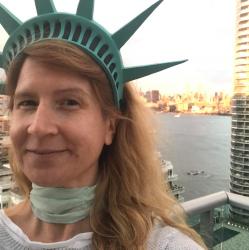Jersey City artist Paul Wirhun is The Eggman. And fairly so. Paul has used his mastery of the traditional Ukrainian art of pysanky to shape a disarmingly unique art practice that references myriad classical art forms with the use of many varieties of, as well as numbers of, eggs. Read on to learn more about his “eggcellent” art career.
About Paul Wirhun
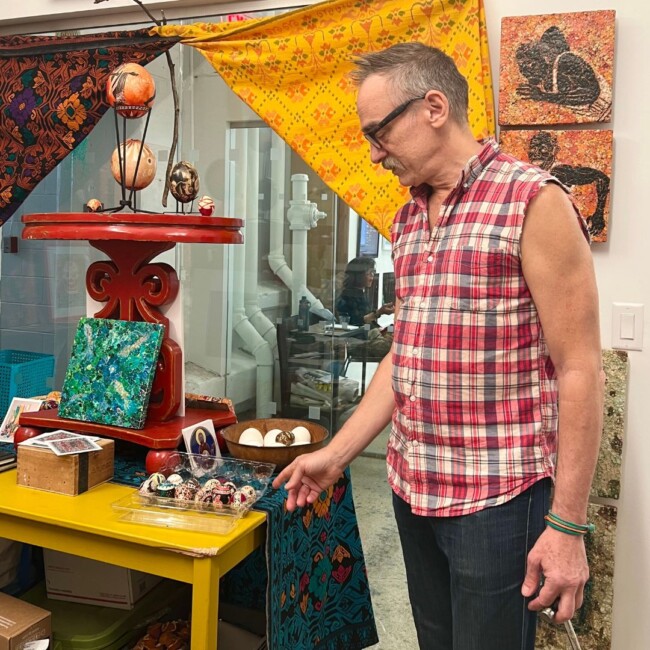
Paul Wirhun’s art objects can be mistaken for mosaics. His collages of batiked shards of egg shell upon woodblocks are lacquered to such a glossy shine that they resemble ceramic tiles and often require explanation to interpret correctly. That his exquisite designs are formed from (or on) eggshells is generally unexpected news for the art-curious visitors who enter his studio at Art 150, located at 150 Bay Street, during Jersey City’s free quarterly downtown art crawl events. His artworks get a regular, “No way!” because, though the process is fundamental to Paul’s artistic expression, the art objects often defy their materiality.
Read More: This Hoboken Resident Is Decorating the American Legion Post 107 With Local Artwork
A Preggcocious Child
Paul’s family attended St. Michael Ukrainian Catholic Church in Terryville, Connecticut, a church built in the Eastern Rite Byzantine tradition. There, he was regularly mesmerized by the gold glimmering iconostasis, a massive screen composed of gilded icons hand-carved to represent a liminal space between the divine and human worlds. Paul cites that luminous scene as a source for his visual repertoire. The evocative metaphysical ideas he was regularly exposed to were equally affecting for him and led to his later years of study in religious anthropology.
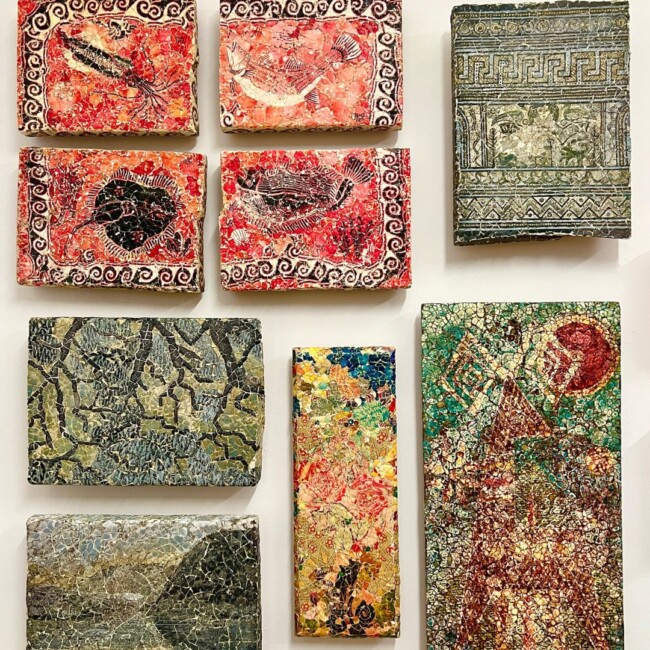
Paul learned the traditional Ukrainian art of decorating eggs at his mother’s elbow. Little did he or she then know that their shared love of pysanky would bring him to develop a wholly new art form. Paul’s art practice is steeped in that ancient tradition, though the skills he mastered in his childhood are now put toward his distinctly unique employ. During his childhood, he found the art of egg decorating a respite from the rougher parts of life. One summer, he paid for his own session at science camp by selling eggs. In his middle school years, he and his mother demonstrated their skills and gave talks on the traditional Ukrainian art form to groups interested in a craft activity typically associated with Easter. He began learning the many simpler designs at eight years of age but was provided a revelation at age 11 when an issue of National Geographic featuring Pysanky included a pull-out poster depicting designs he had never yet encountered. He got to work copying and learning each.
A Bit about Pysanky
The name of the art form derives from the Ukrainian verb pysaty which means “to write.” ‘Pysanka’ is the singular form of the decorated egg while ‘Pysanky’ is plural. Today, it is most likely to be associated with Ukrainian Catholic Easter but the art form is quite ancient, far predating the conversion of Slavic peoples to Christianity.
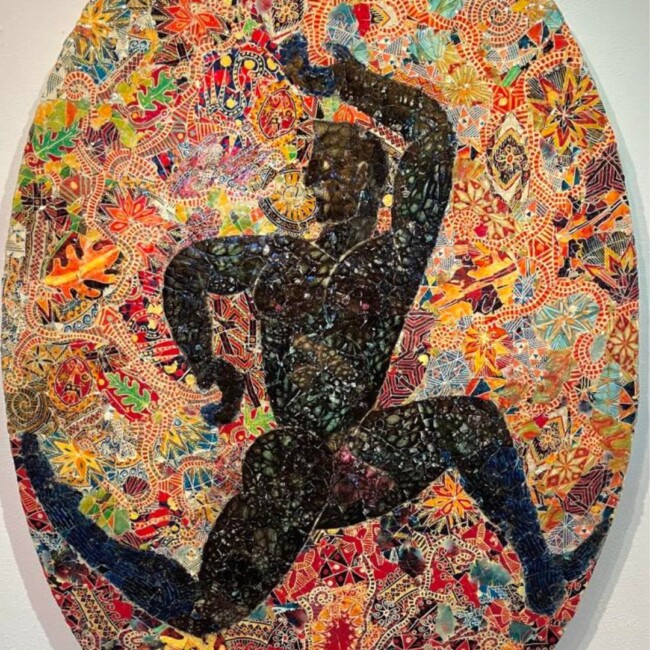
Pysanky were made and placed in the eaves of houses to protect homes from evil spirits and disasters. Spiral motif designs trapped demons. Heart motifs tied romantic young couples in love. All the bits and pieces associated with the art held magical properties. Witches might use the shells to do harm. Even the cloth used to dry the dyed eggs held powerful magic. Within the animist worldview from which the art was developed, each egg was an ephemeral art form, made for a clear purpose, but not intended to last forever.
The Eggman knows his ancestral tradition well. He tells of the bird as the sun god. The rooster calls up the sun, after all. Depictions of bird parts, most commonly feet, represent the power perceived by Slavic peoples in all poultry. The rooster represents the victory of the light over darkness every day. Paul’s artist ancestors would have required the practitioners of the ritualized art practice to enter an intentional state. They were to have spent the day without sin, focused on the good they wished to imbue in their designs.
A Syncretic Art Practice
The mystical aspect of the antique art form that Paul puts to his own use only increases his artworks’ multilayered allure. He has taken an art form that was long ago revised and reinvented to fit a newcomer Christian ideological narrative and again given it new life. Innovation with the tools of his Ukrainian ancestors has led him to produce several series of artworks that reach toward other cultures and traditions.
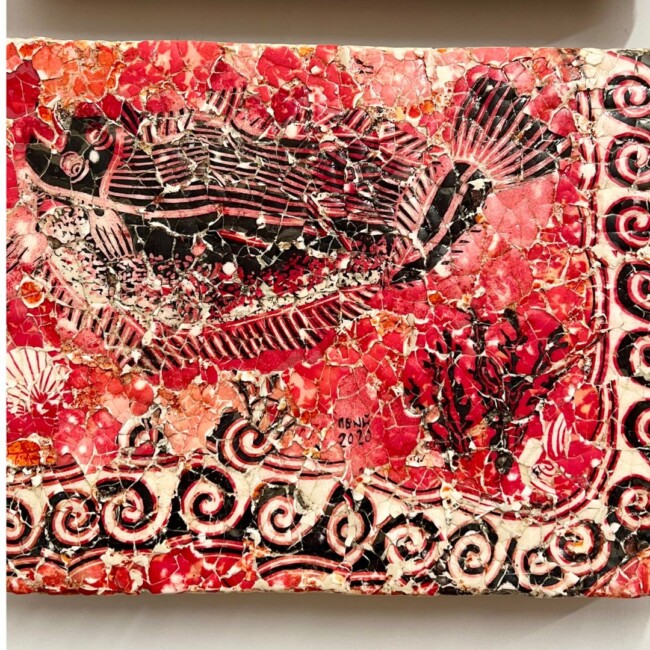
That the Eggman’s artworks on wood board surfaces can resemble tilework is not so surprising given his enjoyment of the ornate Moorish tiles found in the al-Andalus cities of Seville, Granada, and Córdoba. The designs of intertwined floral and geometric figures, known as arabesque, hold complex and sophisticated patterns similar to those Paul has spent a lifetime executing his designs onto eggs. Other artworks that he has collaged from shells resemble Greek archaic pottery, providing a visual language for him to delve into yet other mythos. Paul works to tap into the wisdom locked into a design by replicating its forms: “Ancient design for a new worldview” is his personal provocation.
See More: ‘It’s All Joy:’ Peering into Montclair’s Tiny Art Gallery
Most recently, Paul’s exhibited artworks have been themed around the ecstatic state, as found in Islamic concepts of repeated patterns and in the act of creating. He presented an exhibition titled Ecstasies at the William Scott Gallery in Provincetown, MA in the summer of 2023 and has shown these artworks in group exhibitions in Jersey City through the autumn and winter. This collection of works on flat surfaces holds expressionist compositions that use vivid colors and abstract forms within repeated patterns. Paul describes these artworks as a dynamic rendering of his lived experience with the intention of translating those joyous moments that life can bring.

